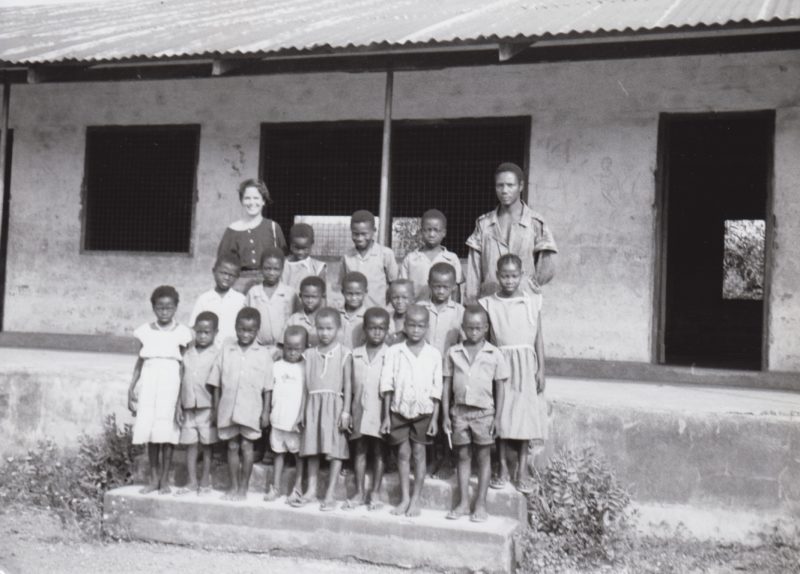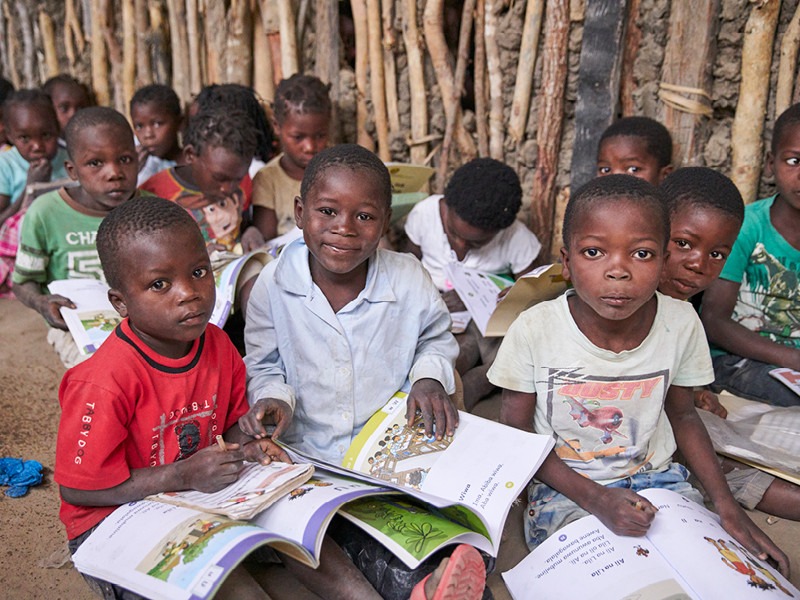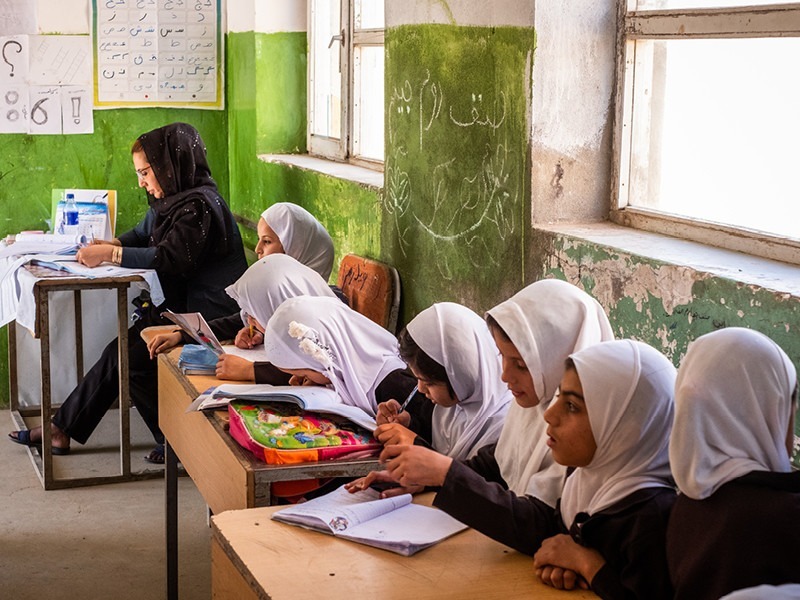After serving as the as the Director of the Education in Conflict Practice Area, Eileen St. George was selected in November to lead Creative’s Education Division. In addition to her leadership at Headquarters, she has three decades of field experience in Africa, Central Asia and Asia.
1. Why do you do what you do?
St. George: I always hoped I could do my part in making the world a better place. I started out as an elementary and special education teacher, and I am somewhat surprised by my own fortune to happen into a profession that enables me to increase opportunities for children around the world to grow, learn and thrive.

2. What does it mean to educate the whole learner?
St. George: As the new U.S. Government Education Strategy articulates well, we know that educating a child goes well beyond the academics to be mastered. Children’s developmental and social-emotional needs are critical to setting them on a healthy and positive path to a productive and fulfilled adulthood.
3. What happens when children are displaced and/or out of school due to conflict?
St. George: Our teams have witnessed the heartbreaking impact of conflict on children. Children who have confronted horrors that have left them fragile, vulnerable and in some cases despondent. They face difficulties in reestablishing relationships, finding trust, regaining patterns of normal social engagement, recovering a sense of agency and empowerment, rediscovering their sense of play and laughter, regaining the inner balance, reawakening to the world around them, learning and making reason of where they are and where they want to go in life.
4. What is Creative doing to address and mitigate those risks?
St. George: Creative helps educators, families, caregivers, youth and children grow in their understanding of means to counter the effects of conflict, violence and insecurity. Creative engages them in activities and interactions that foster healing within themselves as well as contribute to the healing of those around them. We have also found that bringing communities together around educational solutions can be in and of itself a process of social healing if done thoughtfully, with patience and purpose.
5. Why is it important to support teachers on an ongoing basis? How do we do it?
St. George: I am delighted that we have moved beyond the cascade training as a cost effective professional development model. We know, and evidence reaffirms, that true teacher capacity gains require continuous professional development support that provides educators feedback on relevant topics and a solution responsive to their context. We at Creative are developing more innovative and localized ways in which such support can be offered. Professionalizing the teacher profession and fostering school-based and peer-based solutions is needed – shifting away from externally driven, often punitive, means for teacher supervision to reinforcing and nurturing good practice given the challenging conditions teachers face.

6. What role does Creative envision the family and community playing?
St. George: We would like to see much greater focused placed on family engagement in education. We need to reach beyond parent teacher associations or school based management committees and get into the homes of students. It is important to help families of individual students to understand and strengthen developmental, social, emotional and academic support structures at home and the very tangible ways they can do that within their means.
7. How can/do illiterate parents support their children’s learning?
St. George: A parent, whether literate or not, is still able to instill in a child a sense of curiosity, critical reflection, confidence in who they are and what they have to offer to the home, community, the world. Research on resilience, or grit, speaks to the significant impact of a loving, caring adult who lets the child know they are important, meaningful and supported.
8. How does Creative work to meet the unique needs of male and female learners?
St. George: As a former special education teacher, I believe that every learner in a classroom has unique needs. We help teachers understand various ways in which unconscious bias emerges, the importance of differentiated teacher strategies and helping them find strategies and solutions to become more impactful and equitable in their approach to classroom instruction. We also apply programming that helps students to understand their needs better and strategies they can apply to help themselves in their learning goals. We also help them understand their rights as children. We foster engagement with peers and mentors to help build their social safety nets and allow them to individually and collectively transcend the status quo.
9. Why is it important to work with local partners and how do we build their capacity to carry this change forward?
St. George: Creative offers a mentoring and coaching approach to local partner capacity development. We provide explicit training on knowledge and skills needed to engage as effective and compliant actors in this space. We also help local partners grow their vision for who they can be in serving the education and opportunity needs of the most marginalized and vulnerable populations.
10. When you look at many of the places where you have and are currently working, do you see progress? Do you see success?
St. George: Oh definitely. So, I’ll go back to Afghanistan. Creative has had the privilege of working with the Ministry of Education there for the better part of the last 16 years. When we first went in, there was no Ministry of Education functioning. People were sitting in the hallways sipping tea waiting for their jobs to be defined. And, now, they’re around the table shaping the policies, dictating their priorities, strengthening their systems and advancing their mandate to reach more children. They are the drivers in our current efforts and we’re playing a very different type of role today in assisting them in advancing their journey. The capacity shift is palpable. Through the years they have brought millions of more kids back to school. Is there still work to be done? Yes. But, Afghanistan is on that path. It’s unfortunate they must contend with such serious security risks in their efforts. But, the capacity gains are there and they’re rewarding to see.
